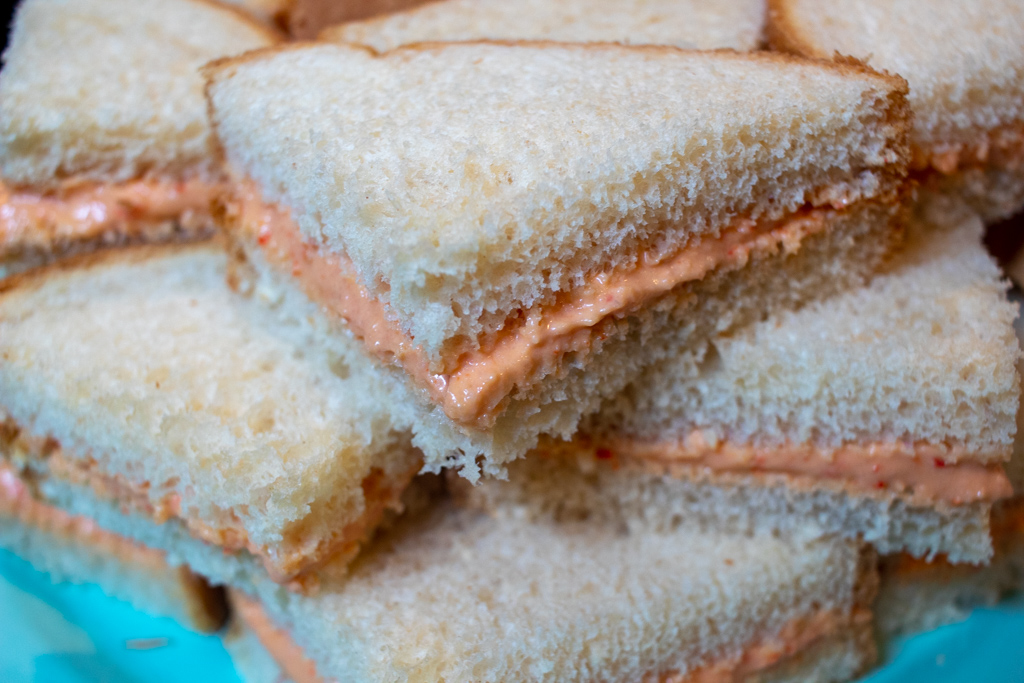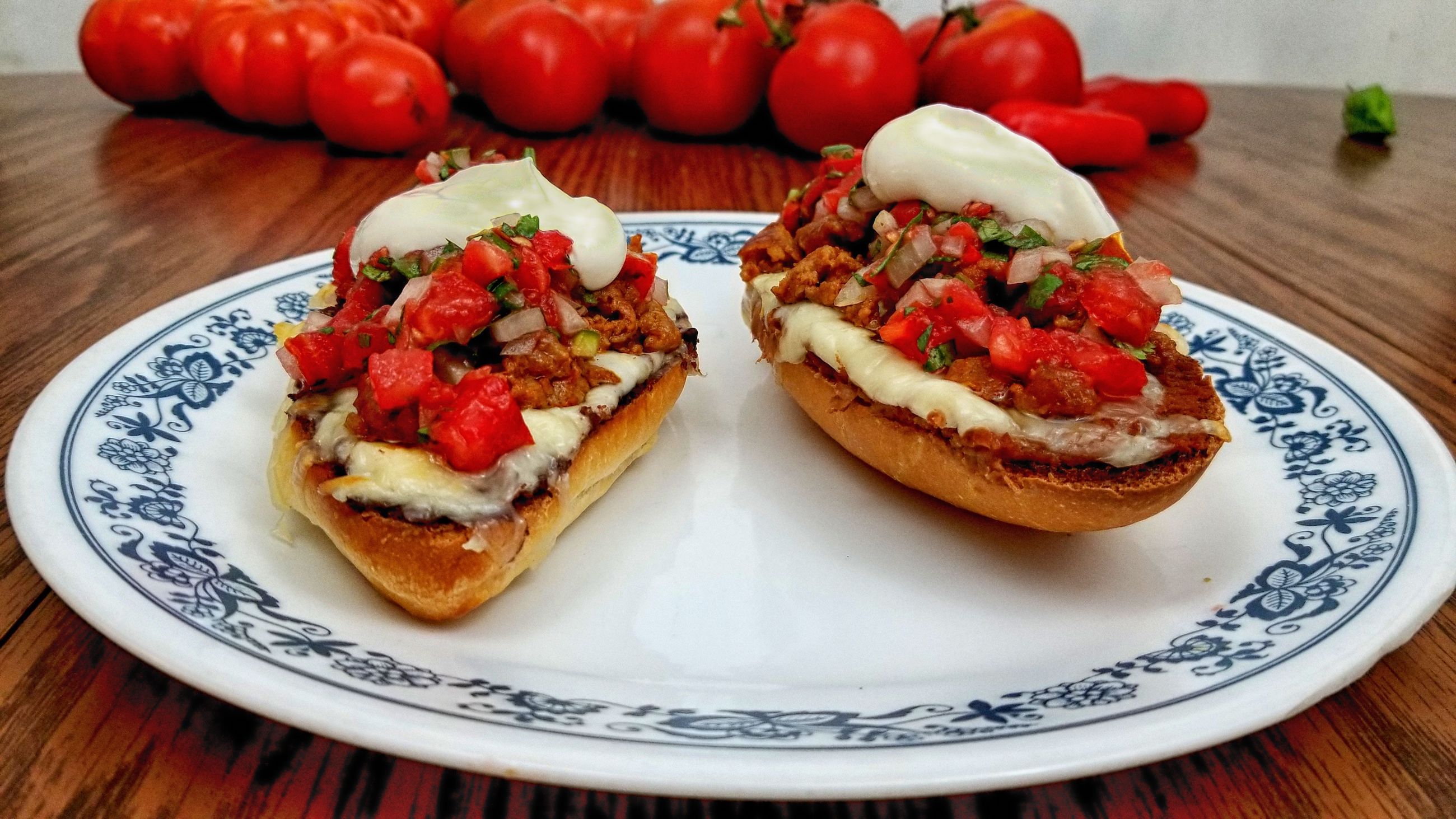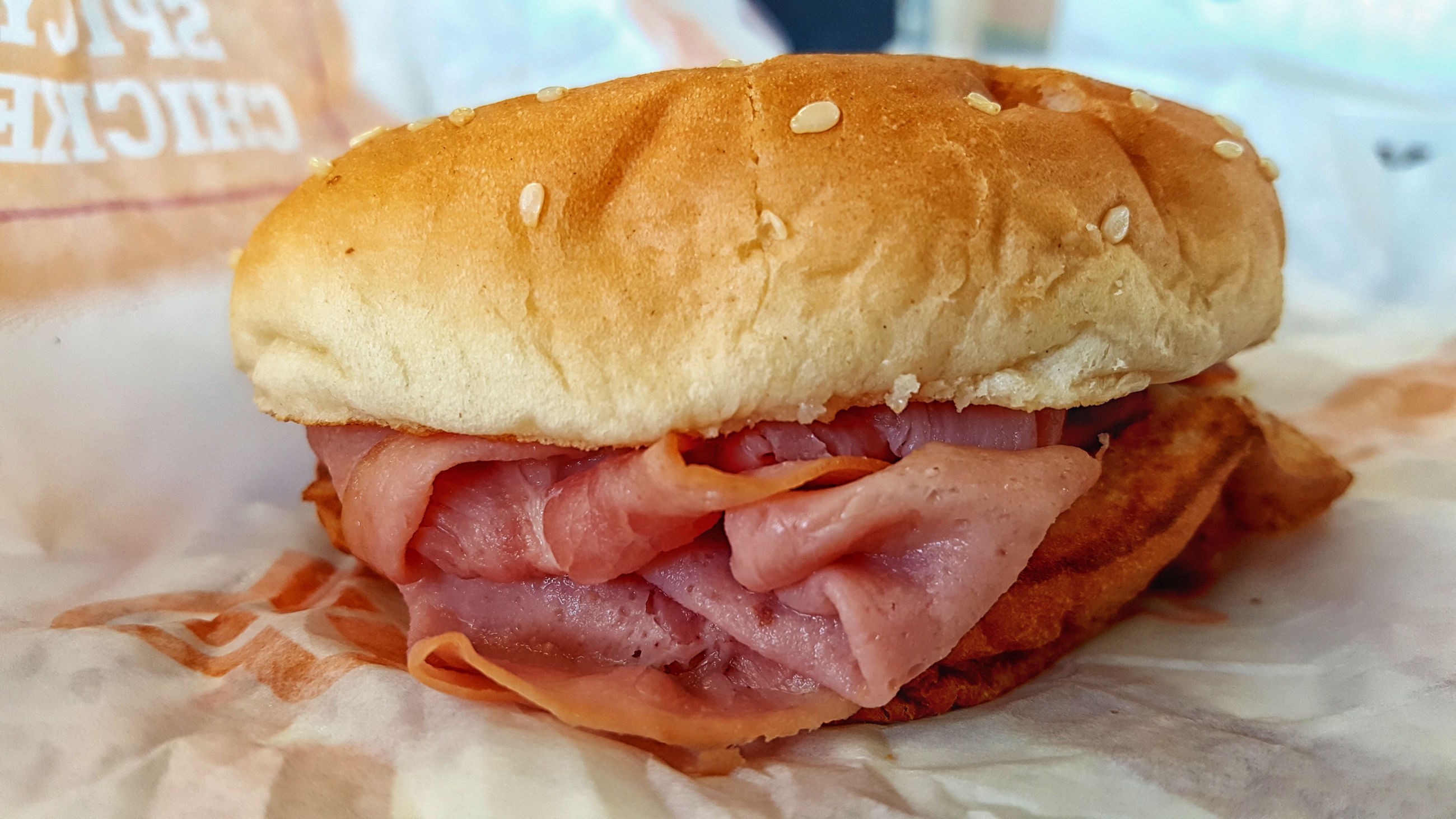Puerto Rican Sandwiches de Mezcla
When writing about a sandwich from a part of the world like the Caribbean or Southeast Asia that has been through colonization by a Western power and the unnatural (but often interesting) hybridization of cuisines that takes place as a consequence, I often like to spend a paragraph or two exploring that colonial history and taking a look at the different influences that went into the creation of the dishes underlying that sandwich. With the party sandwiches made from Puerto Rico’s mezcla spread, however, I have not been able to find much in the way of a canonical history. A search for this sandwich leads to innumerable recipes on mommy blogs complete with the requisite exclamation points and SEO-mandated minimum word counts.
The spread itself, mezcla (Spanish for “mixture”), has some variability–some recipes call for mayonnaise, some for cream cheese, some for this seasoning or that–but boils down to a few essential components: Cheez Whiz, SPAM, and pimientos (or sometimes chopped-up roasted red peppers, which are much the same thing). The cuisine of Puerto Rico was certainly influenced by its long occupation by colonial Spain, but this sandwich is not a result of that. The relevant parts of Puerto Rican colonial history–which is still ongoing unfortunately–consist largely of the US treating Puerto Ricans like citizens when it suits us (and they are–a law passed in 1917 made Puerto Ricans citizens of the United States, just in time for them to be eligible for the WWI draft), and like foreigners when they need our help.
As far as I can tell, these are the high points in the timeline for the invention of Puerto Rican sandwiches de mezcla.

Puerto Rico ceded by Spain to the US
The Treaty of Paris was signed, ending the Spanish-American War. In the agreement, Spain gave up colonies in the Phillipines, Guam, and Puerto Rico to US control.
(Image source: Picryl)

The Invention of Sliced Bread
The Chillicothe Baking Company in Chillicothe, Missouri first began selling pre-sliced bread using Iowan Frederick Rohwedder’s invention.
(Photo credit: Flickr user auvet)

SPAM is first introduced
Originally called Spiced Ham, the removal of all those extra letters in 1937 did wonders for the efficiency of this classic meat food product.
(Image source: SPAM UK on Twitter)

Widespread debut of Kraft’s Cheez Whiz
Cheez Whiz had been available in select markets as early as November of 1952 but it wasn’t until mid-1953 that it went nationwide.
(Image source: Foodimentary on Twitter)

The invention of mezcla
When did that unknown genius, lost to history, first whip SPAM and Cheez Whiz together into a sandwich spread for parties? The world may never know.
I like to think it happened something like this: a young man in a Western shirt jams his way obliviously down the street to the sounds of hi-fi pouring out of his Sony Walkman headphones, happily munching on a block of SPAM. A young lady, similarly lost in a world of music and flavor, dreamily dips spoonfuls of golden Cheez Whiz directly from the jar. Then, disaster! A chance collision at the corner! “Hey! You got your SPAM in my Cheez Whiz!” “Hey, you got your Cheez Whiz on my SPAM!” A nearby shopkeeper, smiling beatifically, drops the whole mess in a blender along with a jar of pimientos and makes sandwiches for everyone. Sadly, this momentous occasion was overshadowed by a similar meet-cute moment.
In any case, ours is not to reason why, or when, or by whom. Ours is but to throw some processed food products into a blender and eat the results.

As I mentioned, the core of the recipe is usually these three ingredients. Variability does exist–I’ve seen Spanish-language recipes calling for actual cheese, in fact–but almost universally, the main part of the spread consists of a can of SPAM, a jar of Cheez Whiz, and a jar of pimientos, including the brine. Often cream cheese or mayonnaise is added, and many of the recipes I’ve seen on the internet use (of course) use the “25% Less Sodium!” variety of SPAM.
To which I say, damn the torpedoes! What is the point of trying to pretend to make a healthy version of this stuff? If we’re going to sin, then let us sin boldly! My version used the three ingredients above, along with a couple dashes each of Worcestershire sauce and Louisiana Hot Sauce.

It is true that I am often uncritical on this blog–it is our goal here after all to celebrate the sandwich, and my personal approach has for the most part been to try to appreciate the foods I try on their own terms, to the extent that I am able. So it may surprise no one to learn that I thought this was delicious. It surprised me, though.
If your mind’s eye has tastebuds, let me take them on a little journey. Imagine the sort of waxy, vaguely cheesy saltiness of a processed American cheese that has been pummeled into a viscous but textureless goop–if you’ve had Cheez Whiz, you are with me so far. Now imagine that given texture, a texture that is almost gritty, but the grit is in fact a million tiny microscopic bits of salty gelatinous pork. Goop+grit+salt+salt doesn’t sound like a winner so far, and it would not be. But then let us give it that slight bit of sweetness and additional texture of the tiny pieces of chopped pimiento, the sourness of the pimiento brine, the depth of malty, bitter, and umami flavors lent by the Worcestershire sauce, and a slight kick from the hot pepper sauce. It is still a weird, viscous, semi-gritty gelatinous goop, but somehow a tasty one?

It certainly deserves nothing better in the way of bread than the cheapest squishiest white bread you can find though. After chilling it for a few hours, more to try to make it more thickly spreadable than to allow any marriage of flavors to occur, I spread it onto cheap supermarket white bread and cut it into quarters (triangles, naturally), not bothering to remove the crusts.

My family were as surprised to enjoy this sandwich as I was. Mindy had to ask a few times where I’d bought the cheese before she was able to internalize that this was spam and cheez whiz, whipped up in a blender. The textural deficiencies that the spread has by itself are almost entirely masked by combining it with squishy white bread. It becomes… not elegant, not really, it is still a cheap salty sandwich spread. But you can almost fool yourself into thinking that it’s something better.

As I found out though, those deficiencies are magnified when attempting to use the spread in almost any other context. (I did get a kick out of it as a potato chip dip but that may be a bridge too far for my more genteel readers). The problem with the spread is that it does not lend itself to heating in any way. For instance, I made myself an egg sandwich with mezcla.

As the mezcla heats, the cheez whiz almost immediately liquefies and separates itself from the tiny bits of spam. Those tiny bits of spam then begin to render their fat, making them less gelatinous and more like individual pieces of… well, grit. It’s not terrible, not really. But it’s not very good either, not even the low bar for “good” that we often set here.

The cheese dog and cheese fries I made using mezcla had the same issue. You can see the cheez whiz beginning to separate where it touches the hot sausage or fried potatoes, sliding off to the side. Did it taste good? Sure, in a kind of lowbrow way that I’m not ashamed to say I enjoy. But it was less good than it had been simply spread on cheap white bread.

And maybe that’s why I had such a hard time finding other ways to use the spread–because there simply aren’t any. I think if you were going to use it in a hot application you’d have to stabilize it against the melting of the cheez whiz and the rendering of the SPAM by adding something to soak up those liquids–probably cracker crumbs or similar, and probably as much by volume as you’d add of the cheese spread. That would change the texture and flavor of it entirely, and not necessarily for the better. So maybe it’s best to simply enjoy it as a simple sandwich at parties, and not try to make it into something it isn’t.
Any readers out there more familiar with mezcla than I am, who have their own recipes or other uses for it? Please let us know in the comments below!

I like sandwiches.
I like a lot of other things too but sandwiches are pretty great












I think I would really enjoy this sandwich every once in a while. I wonder if you could use the filling in macaroni and cheese?
This was an awesome read.